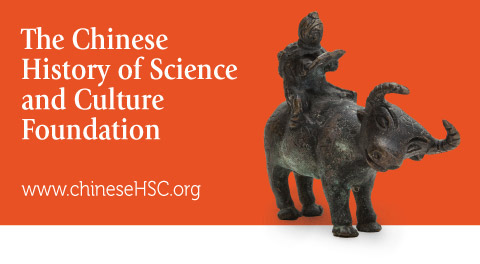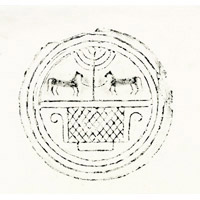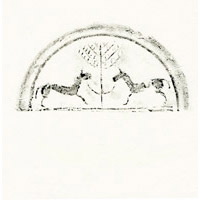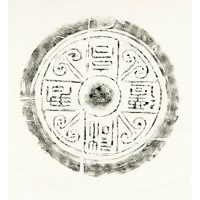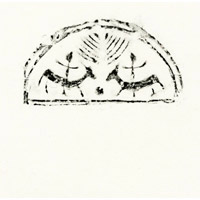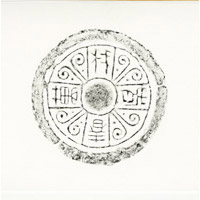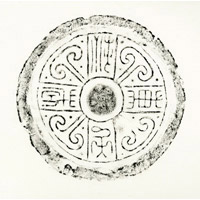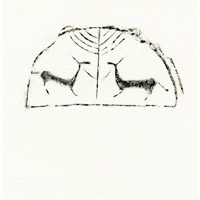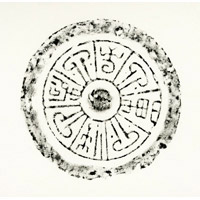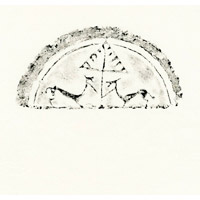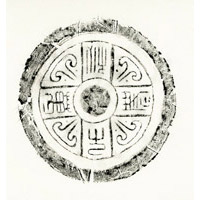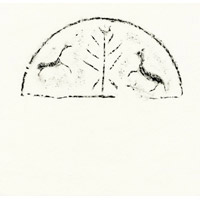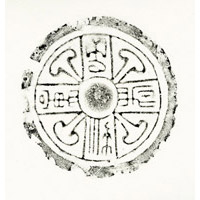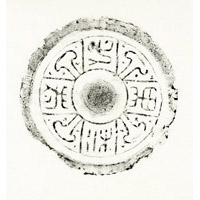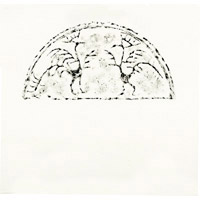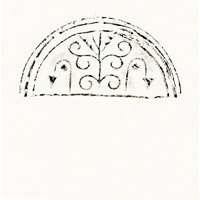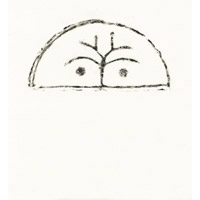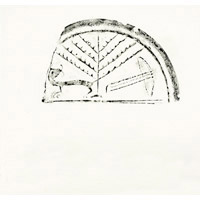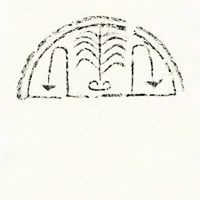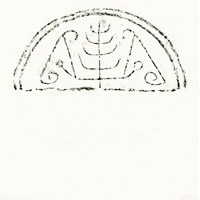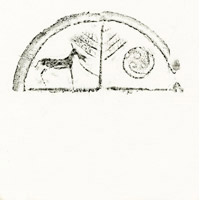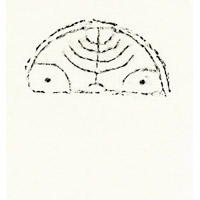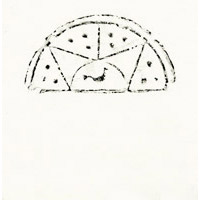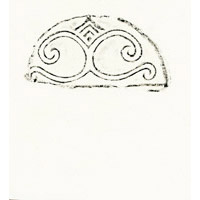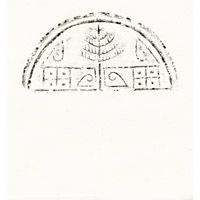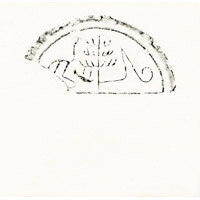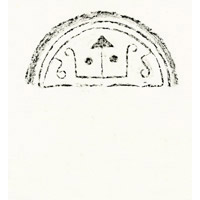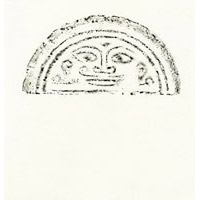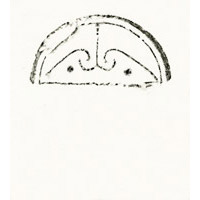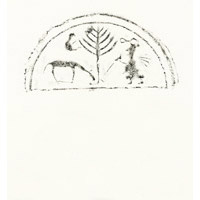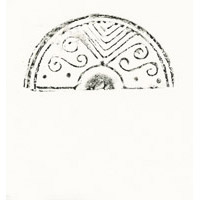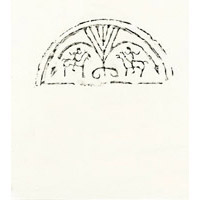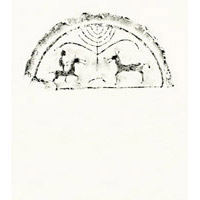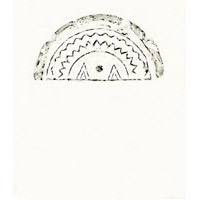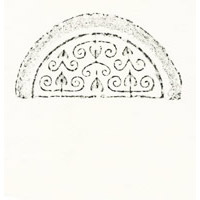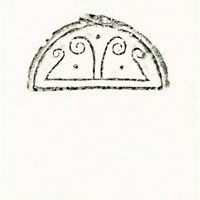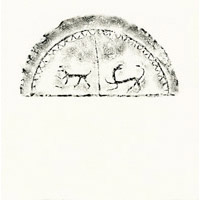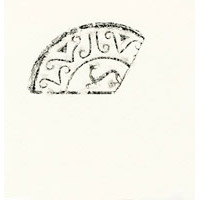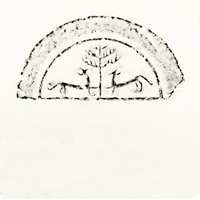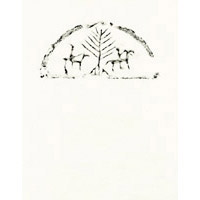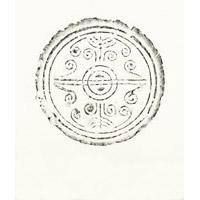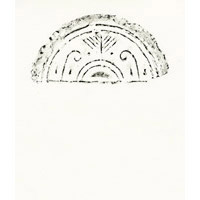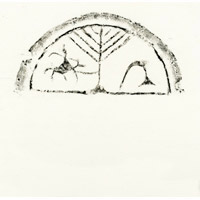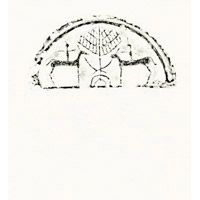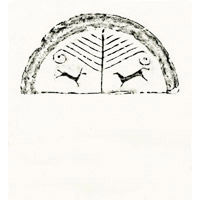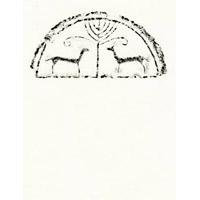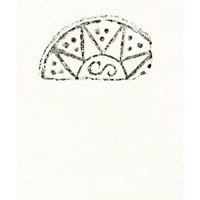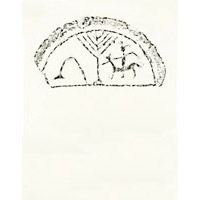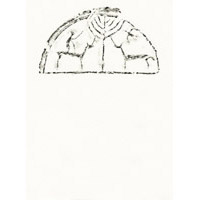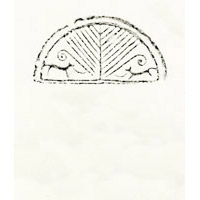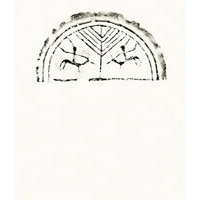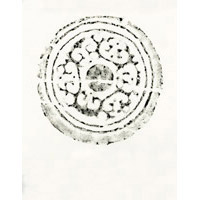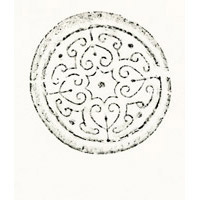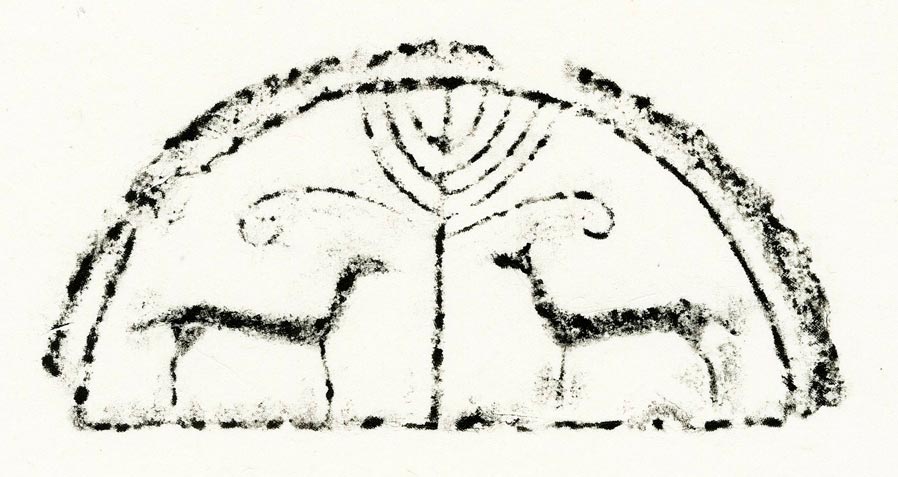
Qi (pronounced in English ‘chee’ and formerly spelled Ch’i) was an independent kingdom prior to the unification of China. It was based in the region of China which is today known as Shandong Province, and its ancient and long-vanished capital Linzi was on the site of the modern town of Zibo. Qi was founded during the period of the Zhou Dynasty, which commenced in 1046 BC. In 221 BC, Qi ceased to exist as an independent kingdom. It was the last of the kingdoms during the ‘Warring States Period’ to fall to conquest by the man who would become the first Emperor of a united China, the King of Qin (pronounced in English ‘chin’ and formerly spelled Ch’in), from which the name China is derived.
This album of rubbings was sold to Robert Temple in the 1990s by a distinguished Chinese archaeologist, who had made the (only existing) rubbings of the ends of a large number of roof tiles of the Qi Kingdom which had been found in a variety of archaeological excavations over many years. These rubbings represented his lifetime’s collection of Qi Kingdom roof tile art. The album was sold on the condition that Temple would eventually make it available to scholars and the world public as a record of the art of the Qi Kingdom, which is otherwise very little known. None of these rubbings has ever been published before.
The iconography and designs of these Qi images will form a subject of study by future scholars, who can try to interpret their meaning. Many of them appear to be mythological and sacred. No other source of such a widespread variety of specimens of Qi Kingdom art and design is believed to exist.
One of the most famous art motifs of the Han Dynasty of China (206 BC – 220 AD) is the so-called ‘flying horse’. A statue of the ‘flying horse’ caused something of a sensation when exhibited in a travelling exhibition of the Han Dynasty many years ago, and the image has been reproduced countless times since then in books and films. It is now one of the most familiar images associated in the public mind with ancient China. It therefore comes as a distinct shock to realize that the ‘flying horse’ motif did not originate with the Han Dynasty but was a motif of the Kingdom of Qi, hundreds of years earlier. It may clearly be seen on a Qi roof tile, the rubbing image of which is seen here as Image 28. This is a revolutionary discovery in the history of Chinese art, and is here made public for the first time.
Horses figure very prominently in these rubbings, as does a central ‘sacred tree’. The art of these roof tiles shows a delicacy and skill which is highly evocative despite its deceptive simplicity. These Qi rubbings make it clear that the limpid, suggestive, almost evanescent qualities of Chinese art, which combines lightness of touch with profundity of intent and meaning, go back centuries earlier than we might have thought until now. We see here that the Chinese artistic genius was in full flower long before the unification of China, and that many of the finest qualities which we associate with Chinese art were indigenous to the Kingdom of Qi, and were present in the region of Shandong in the remotest antiquity.

Download PDF of all images in this library
Tip! Click to view in your browser's PDF viewer, right click to save to your computer...

